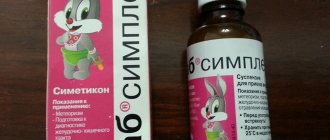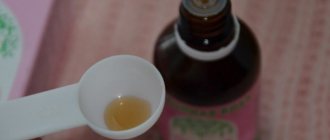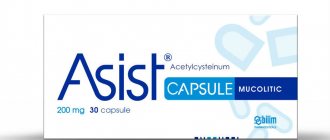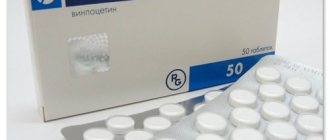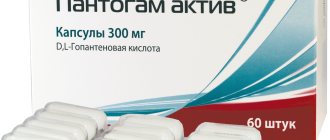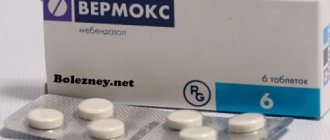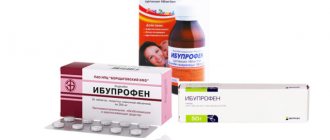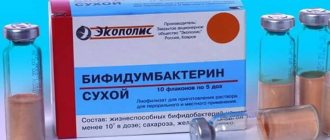Pharmacodynamics and pharmacokinetics
Pharmacodynamics
The mechanism of action of simethicone is based on reducing the surface tension of gas bubbles formed in the intestines, which leads to their rupture. Simethicone acts on the surface of gas bubbles without affecting the mucous membrane and is not absorbed, therefore it is harmless to the child’s body. The released gas is removed from the intestines naturally, while digestion is normalized and nutrients are better absorbed.
The drug does not affect gastric secretion. There is no habituation to it. In terms of pharmacological treatment, colic is considered one of the most effective carminatives. Prescribed during the onset of pain (pain disappears within 10 minutes) or for the purpose of prevention with each feeding.
Pharmacokinetics
After oral administration, it is not absorbed from the intestine and is excreted unchanged.
Mechanism of action
In the intestinal lumen, gases are in the form of foam, that is, many bubbles coated with mucus. Espumisan acts in this case as an antifoam. It reduces the surface tension right at the interface between liquid and gas, and thus significantly reduces the number of bubbles. The released gases are removed outside. As a result, overstretching of the intestinal wall disappears, and colic goes away.
You should know that children's Espumisan is not absorbed and only works in the intestinal lumen. Therefore, it is safe and does not have any harmful effects on the baby’s body.
Instructions for use of Espumisan Baby drops
Children's Espumisan is a drug in drops in bottles with a dropper, with which you can accurately dose the drops by holding the bottle vertically with the pipette down. Remember that the bottle is shaken before use.
Instructions for Espumisan for newborns
How many drops to give to a newborn? Give 5-10 drops during each feeding or after, but no more than 5 times a day.
How to take Espumisan for newborns? The drug is given from a spoon; if that doesn’t work, you can add it to a bottle of water or formula. To avoid negative consequences, you cannot prescribe the drug to your child on your own, but only on the recommendation of a pediatrician. It can exclude a pathology such as intestinal obstruction, in which the drug is contraindicated. This medicine is effective for increased gas formation that occurs during the period of adaptation of the digestive system, which is still imperfect in infants. Since not enough enzymes are produced, gas formation is inevitable.
Instructions for use for older children: the drug is given to children from 1 to 6 years old, 10 drops up to 5 times a day, over 6 years old - 20 drops up to 5 times. If you do not find Espumisan Baby in the pharmacy, you can use Espumisan 40 or Espumisan L, however, the dose will be higher, since these drugs contain 8 mg and 40 mg of simethicone in 1 ml, respectively, and not 100 mg. Newborns and children up to one year old are given 1 measuring spoon (or 25 drops) during each feeding, children from 6 years old 2 measuring spoons (or 50 drops) up to 5 times a day. Any drug can be taken long-term.
Compound
This drug is called natural in many sources. What substances does Espumisan contain for newborns, if it has earned the right to be called that and is approved for the not yet fully formed ventricles of such babies? The composition is indicated in the instructions:
- the active substance is simethicone: a terrible word, incomprehensible to ordinary people, which smacks of “chemistry”, although upon detailed study it turns out that it is still an organic and not a synthetic substance related to silicon;
- excipients contained in Espumisan drops: hyprolose, sorbic acid, banana flavor, sodium cyclamate and saccharinate, purified water;
- in suspension: methyl parahydroxybenzoate, polysorbate, sodium carmellose, cyclamate and saccharinate, colloidal silicon dioxide, banana flavor, hydrochloric acid, purified water;
- in capsules: gelatin, glycerol, methyl parahydroxybenzoate, quinoline yellow dye (E104), sunset yellow dye.
Having carefully studied the composition of all forms of release of Espumisan, much becomes clear. For example, why do newborns like droplets more than a suspension: they simply contain less of that same “chemistry”. The dyes indicated in the instructions for the capsules also explain why this medicine is recommended to be given to children only after 6 years.
One way or another, you shouldn’t be afraid of all these benzoates and dioxides, because drugs for such babies undergo strict clinical control. The Berlin-Chemie company is always a guarantee of German quality, which you can trust in the health of your children.
According to statistics. In 5% of cases, colic in newborns occurs due to an organic disease. The remaining 95% are characterized by a benign course without further complications and disappear without a trace after 4 months.
Analogs
Level 4 ATC code matches:
Disflatil
Kuplaton
Espumisan
Espumisan L
Espumisan 40
Bobotik
Dill water
Pepsan-R
Sub Simplex
Infacol
Plantex
Bebinos
Dicetel
Meteospasmil
Rotokan
Romazulan
An analogue for children based on simethicone is Bobotik , Sab Simlex , containing essential oils - Baby Calm and Happy Baby , granules from plant raw materials Plantex .
Bobotik is approved for children from 28 days of age, contains raspberry flavor and citric acid, and does not contain milk sugar.
Simplex suspension is used from birth. The suspension is not viscous, separates and requires careful shaking. Should be used with caution in children prone to allergic reactions. Espumisan for children is also used from birth, but the emulsion is more viscous in consistency compared to the suspension.
What is better Plantex or Espumisan for newborns?
These are drugs with different active ingredients. Plantex are granules for making tea, containing fennel fruit extract. It has a carminative effect (prevents the formation of gases), improves digestion, eliminates spasms. It can be given to newborns from 2 weeks of age as a drink. Diluted tea does not change its properties during the day. The drug contains lactose, so tea should not be given to children with lactase deficiency. Pediatricians note that children are often allergic to the drug. Parents also report this in their reviews.
What is better than Espumisan for children? First of all, it is physiologically inert, not absorbed, and does not contain lactose. It can be used for a long time without fear of addiction and the appearance of any side effects.
special instructions
Sometimes Espumisan is not effective. This is explained by the individual characteristics of the child’s body, which reacts differently to the action of the components of the drug. Some children immediately improve their condition, others do not respond to its action, and still others develop allergies.
If colic does not disappear, or an allergic reaction occurs, contact your pediatrician who will help you choose a similar drug.
It is recommended to give the medication to the baby while feeding from a spoon or syringe without a needle. If the child refuses the medicine, you can dip a pacifier in it or drip it directly onto the nipple.
Thus, Espumisan is a drug with a carminative effect to relieve colic in newborns. The medication is given to the baby as prescribed by the doctor after the diagnosis has been established. The decision on the dose, frequency of administration and duration of the therapeutic course is made by the pediatrician.
Reviews
Infantile colic begins to bother the child at 2–3 weeks of life and continues until 3–6 months. To eliminate them, there is children's Espumisan. Questions often arise: can it be given to a newborn and how to give it to an infant? Let's look at these questions. A child under 28 days of age is considered a newborn. Espumisan L and Espumisan 40 are approved for use in children from birth. They do not contain lactose. For ease of dosing, they have a measuring spoon or pipette. These drugs can be given to a newborn without fear, and the dosage is the same as for infants (from 1 month to a year). For newborns and infants, the drug is prescribed 1 scoop or 25 drops. Give directly from a spoon, mixed with a small amount of milk, added to milk mixture or water.
How often can Espumisan be given to newborns? The drug is given after each feeding. How many times can you give to an infant? In the same way - after each feeding, up to 5 times a day. This drug intake is preventive. Can only be given during colic. Some pediatricians believe that these drugs are best given during colic, and not for the purpose of preventing it. It has been reliably proven that this drug does not cause side effects and long-term use is possible without harm.
Reviews about Espumisan for newborns are varied. There are reviews that parents tried all the drugs, and only Espumisan helped. Some people are helped by this drug, others by Plantex, and some by dill water, massage, a warm heating pad on the tummy and removal of gases using a gas tube. Sometimes children refuse to drink Espumisan (they spit out the medicine), but Baby Calm and Sub Simplex are taken with pleasure. You need to choose the drug that brings relief to your child. You can try everything together. For example, any drug based on simethicone and Baby Calm. Consult your pediatrician about taking bifidumbacterin . In addition, a nursing woman needs to exclude from her diet foods that cause gas (kvass, legumes, cabbage in any form, apples, grapes, sweets, baked goods) and take a decoction of chamomile with dill and fennel seeds.
Indications
The use of Espumisan for children without the permission of a pediatrician is not recommended. Despite the fact that the drug is in the public domain and freely sold without a prescription, it should not be abused. First, the child must be examined by a specialist to confirm or refute the diagnosis.
At home, parents may confuse the symptoms of ordinary colic with signs of intestinal failure, which is a contraindication for taking this medicine. So strictly follow the medical instructions.
Drops
For drops they are as follows:
- flatulence: bloating, increased gas formation, distension and fullness in the epigastric region;
- preparing the baby for x-rays, ultrasound or other diagnostic studies of the abdominal organs;
- intestinal colic;
- poisoning with detergents - substances in detergents.
Suspension
Indications for the use of Espumisan in the form of a suspension for newborns completely coincide with the recommendations for drops. However, the list is expanding significantly, i.e. this pharmacological form can be used in much more severe cases:
- aerophagia - involuntary swallowing of air by a newborn and frequent belching;
- dyspepsia - painful, difficult digestion;
- Roemheld syndrome - numerous functional changes in the gastrointestinal tract and cardiovascular system.
According to pediatricians and judging by numerous reviews from mothers, this is one of the best drugs for colic in newborns. The question is different: does Espumisan help with constipation, about which the instructions usually say nothing. And this is not an accident.
Indeed, many sources indicate that by eliminating gas, this medicine normalizes the child’s stool. But in practice, most often, on the contrary, it leads to the fact that the baby cannot go to the toilet. So for constipation, pediatricians do not recommend giving it.
It turns out... A new promising direction in the treatment of colic in newborns is probiotics. The effectiveness of alternative medicine (fennel, herbal teas, massage), according to research, has not been proven and is sometimes even harmful.
When should you not take it?
“Espumizan” is prohibited for use in case of intestinal obstruction, therefore, if the child is prone to frequent and severe constipation, as well as in cases where the baby does not have bowel movements for 2-3 days, the drug should not be given without consulting a specialist.
Fructose intolerance is also a contraindication for the use of the medicine. If during use the baby experiences hypersensitivity reactions or individual intolerance, treatment should be discontinued.
Side effects: allergies, constipation and diarrhea
Adverse reactions when using Espumisan are practically not observed. In some cases, problems with stool (constipation or diarrhea) may occur, as well as allergic reactions: rash, hives, eczema, itching.
If your baby develops allergy symptoms, you should stop using the drug, give your baby allergy medicine and consult a doctor.
The drug is compatible with almost all medications, and can be part of complex therapy for chronic or acute diseases. An interval of 1.5-2 hours should be maintained between doses to avoid problems with the absorption of active substances.
